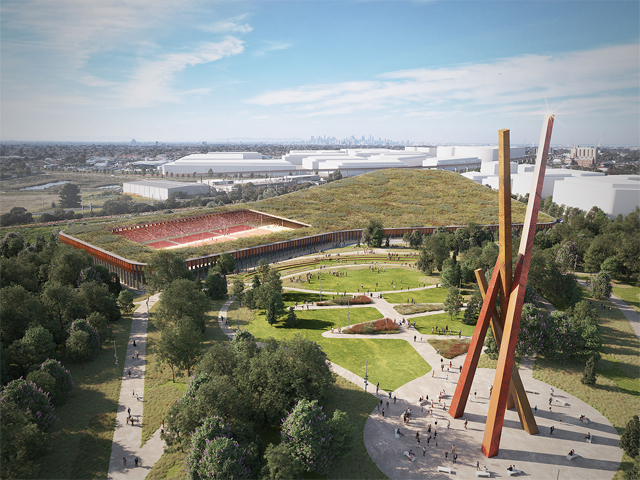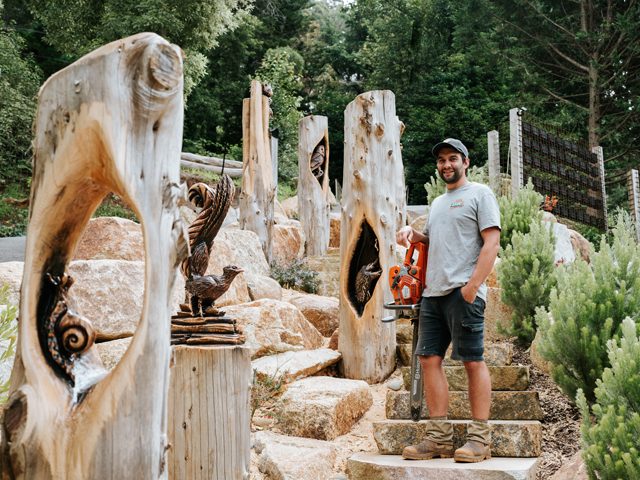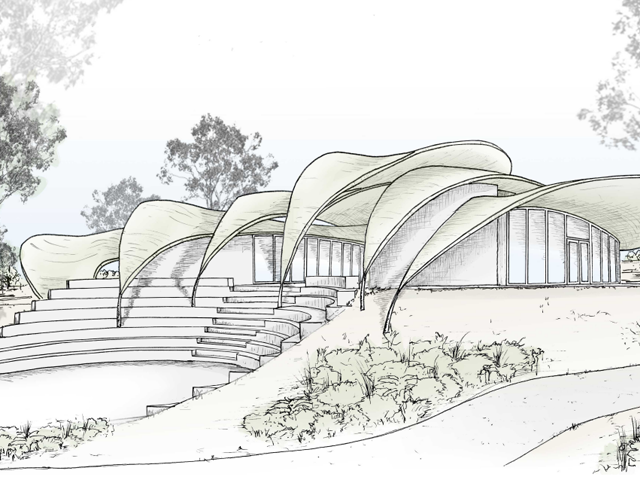A GLASS ACT | VICTORIAN GLASSHOUSE RESTORED
17 May 2018
After a painstaking five-year restoration project, the historic Temperate House conservatory in London's Kew Gardens, the largest remaining Victorian glasshouse in the world, has been reopened to a delighted public.

Home to over 10,000 plants, including rare and endangered, the glasshouse is an architectural masterpiece of its time and provides a revitalised space for visitors to wander through and delight in. The $41-million restoration was led by London-based architectural firm Donald Insall Associates, a company that specialises in historic building consultation.
Over 190 metres long, the glasshouse is a Grade I listed building, designed and constructed in 1860 by Decimus Burton in Richmond upon Thames, and is a palace of wrought iron, domed roofs and decroative columns, creating a spectacular space for flora to truly thrive. Burton was an innovative designer for his time, accredited with being the first architect in England to use cement render, and was highly praised for his architectural work on Temperate House. 
Temperate House was restored in the 1980s, as a result of falling into disrepair, and in 2003 was declared a World Heritage site by UNESCO, alongside the rest of the Royal Botanic Gardens in Kew. In 2012, the glasshouse was classified as a Building at Risk by English Heritage, inciting action from the government to save the iconic site.
“Every conservation technique has been realised in a way that retains the bold spirit of this elegant marriage of Victorian architecture and engineering,” said Aimée Felton, an associate at Donald Insall Associates and lead architect on the project.
“We have also carried out our own painstaking research on Decimus Burton and Temperate House, taking samples of old materials and studying these carefully while working with the highly skilled craftsmen to ensure all interventions have integrity.” 
The building was redeveloped with modern technology in mind, ensuring that the air flow would be optimised throughout in order to improve environmental control and reduce energy consumption. Also taken into consideration was ensuring even light throughout the glasshouse to ensure the plants within will thrive.
The construction process was challenging as the majority of plants had to be painstakingly moved and stored in an external location, with only nine trees remaining throughout the renovation due to their horticultural importance. Including the reinstallation of 15,000 glass panels, over 69,000 parts of the glasshouse were dismantled and stored externally in order to completely repaint and reglaze Temperate House. 
"The time it will take for the newly propagated plants to reach maturity will offer visitors a full and unobstructed view of the incredible metal skeleton in all its glory: a cutting-edge sanctuary for plants," said Felton.
In addition, each piece and plant had to be registered with tablets and coding software to ensure they would be returned to the original location. In order to remove rust and restore the original metalworker’s stamps and casting marks, the pieces were each cleansed with highly pressurised water jets and crushed garnet blasting. New stamps were added to the replacements pieces along with fresh casting and finial details on the snow guards.
“New glazing, mechanical, ventilation systems, path and bedding arrangements all took their founding principles from Decimus Burton's own drawings, held within Kew's archives,” Felton explained. 
A colour scheme of polychromatic stone was chosen for the repaint as a nod to the original scheme of stone-coloured walls, offset with blue and white decorations, which was replaced by white titanium dioxide in the 1950s.
Decorative additions were used by Burton to gloss over the glasshouse’s key functions, such as the cornucopia urns were used to hide the chimney flues for the boilers. Donald Insall Associates restored these ornate elements as a nod to Burton's innovative ideas, as well as other functions that are now obsolete in the modern age, such as the boilers and the entombed heating pipes. 
Sir David Attenborough attended the opening ceremony and described Temperate House as “breathtakingly beautiful”.
“Human beings are taking over so much of the planet and the climate is changing so that areas where plants once grew can’t grow anymore,” Attenborough stated.
“There is nowhere else for them to go, except they can be kept here. In some circumstances, the only way you can prove that a particular species is that species is to come to Kew and compare what you have with what is here. This is why people come from all over the world come to the Kew herbarium and to these great glasshouses.
“When I had an office job with the BBC, I used to come [to Temperate House on] weekends when I was getting really depressed and take a deep breath because there was a smell of the tropics here,” he continued. “It’s lovely.” 
Director of horticulture at Kew Gardens Richard Barley described the Temperate House as “A glistening cathedral where the new glass allows the sun to stream in and the ironwork has been restored to its glossy best.”
He continued to state that the project was an example of world-class horticulture, science and design seamlessly blending together. “It’s been amazing watching this project unfold, the building emerges gloriously and some of the world’s rarest plants safely reach their home.”
Images Gareth Gardner

MORE NEWS

MELBOURNE'S NEW PARK ON A FORMER LANDFILL SITE

STRIKING GOLD IN BALLARAT

MASTERPLAN FOR INCLUSIVE, CLIMATE-RESILIENT COMMUNITY PARK IN LISMORE

WOOD CARVING WITH BRANDON KROON

HARNESSING THE POWER OF DESIGN TO TRANSFORM CITIES

